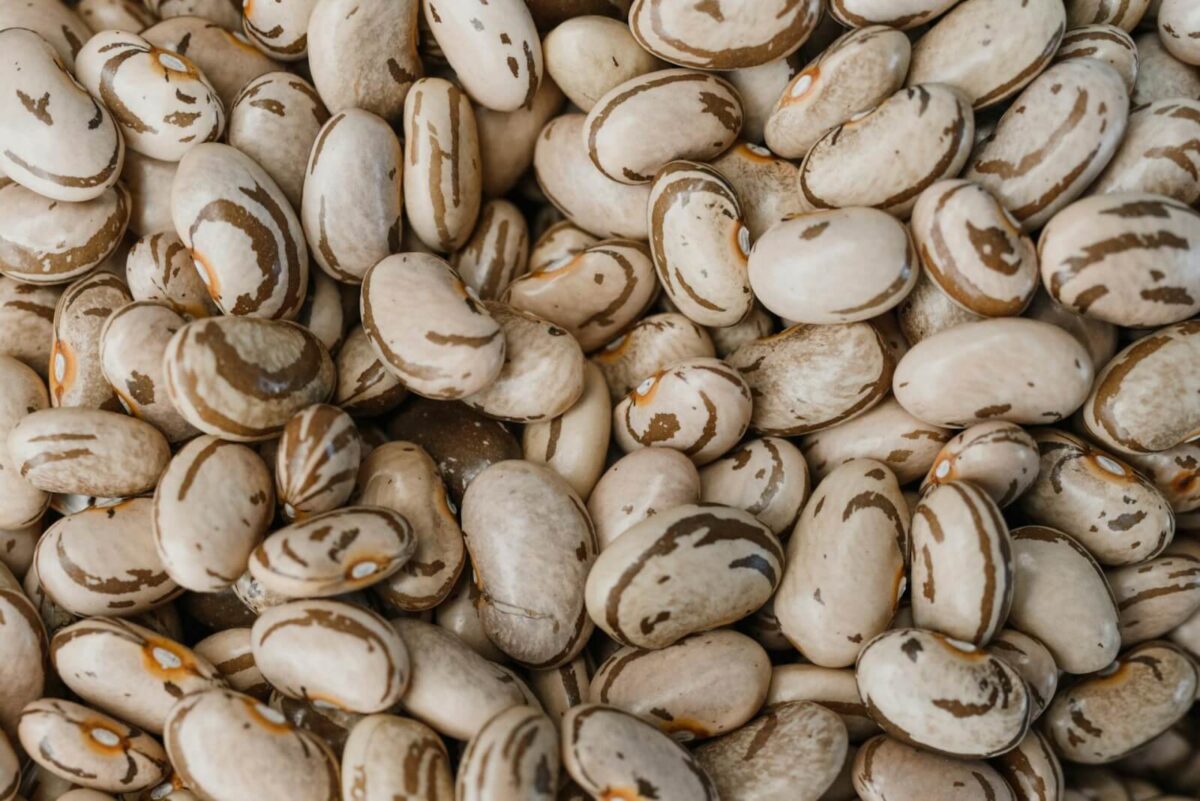Are Black Beans Healthier Than Pinto Beans?

Beans are a great source of protein and fiber and have been staples of people’s diets for a long time. There are tons of different types of beans: kidney, black, and pinto beans are just a few of the most popular choices.
Black beans and pinto beans especially are some of the most popular beans because they’re affordable and versatile in so many dishes.
While pinto and black beans are healthy, a lot of my patients ask me:
“Is one legume better for you than the other?”
This blog will break down the differences between these two types of beans, from the basic information about the beans’ appearances to their nutritional benefits and shortfalls.
Differences Between Black Beans and Pinto Beans
Color
As the name suggests, black beans are black, whereas pinto beans are a light brown color with white speckles. The Spanish word pinto means “painted,” and the bean’s white spots look like someone painted them on.
Size
Though the size difference is barely noticeable, black beans are smaller than pinto beans.
Texture
Pinto beans are creamier and softer compared to black beans.
Flavor
Black beans have a slightly sweeter flavor than pinto beans. Pinto beans have a mild taste, which helps these beans complement the flavors of the foods they’re cooked with.
Black Beans vs Pinto Beans Nutrition Facts
From a nutritional perspective, pinto beans and black beans are almost identical. Both beans are a good source of plant-based protein and fiber, containing around 15 grams of protein and fiber per 1-cup serving.
There are some nutritional differences between black beans and pinto beans, though they are slight.
The data used to compare the two beans comes from the USDA FoodData Center and measures a 1-cup serving of cooked black beans and cooked pinto beans, without any salt added to either bean. The numbers in the chart below have been converted to grams for consistency.
Carbs
Black beans are slightly lower in carbs compared to pinto beans. According to the USDA FoodData Center, a 1-cup serving of cooked black beans has 4 fewer carbs than 1 cup of cooked pinto beans.
Fats
Pinto beans contain more fat than black beans, with a difference of 0.18 grams, which is not a big difference to impact most people.
Are Refried Beans Bad for You?
Refried beans are often found in Mexican and Southwestern dishes, like burritos and bean dips. Although pinto beans are commonly used to make refried beans, you can use any bean.
Fried foods are not as good for you because the process adds extra calories. Before the frying process, frying pans are coated with butter, lard, or oil, which contain high amounts of trans fat. During the food preparation process, the cook applies butter to the food and covers it in flour.
Many people believe that refried beans are worse than other fried foods because “refried” implies the beans were fried twice. This is not the case because refried beans go through the frying process once. The “refried” comes from a mistranslation of the dish’s Spanish name, frijoles refritos. Refritos means “very fried” or “well-fried,” not “twice-fried.”
That said, refried beans contain more sodium and trans fats compared to other beans. This comes down to how you prepare your food and the ingredients you use. For example, using clean butter in your meal prep or spreading it on your food can be a healthier alternative.
You can also reduce sodium by not using canned beans. Instead, you can buy them dry and soak the beans in water. Canned beans usually have salt added to them to preserve them. Soaking dried beans may be more time-consuming, but the health benefits are worth it.
Note that sodium is not bad — everyone needs sodium in their diet. As with most things, sodium is fine in moderation.
Are Pinto Beans or Black Beans Better?
Both black beans and pinto beans offer an array of nutritional benefits, and the ultimate decision for which bean is the better bean may come down to personal preferences and dietary needs.
For most people, the nutritional differences are minuscule. But if you want to cut back on as many carbs as possible, then you might want to stick with black beans since pinto beans are slightly higher in carbs.
The next time you go to Chipotle and the person behind the counter asks you if you want black or pinto beans, rest assured that both beans are great options.
To learn more about how to incorporate more beans into your diet, contact Dr. Amanda Borre of Lifelong Metabolic Center today.


